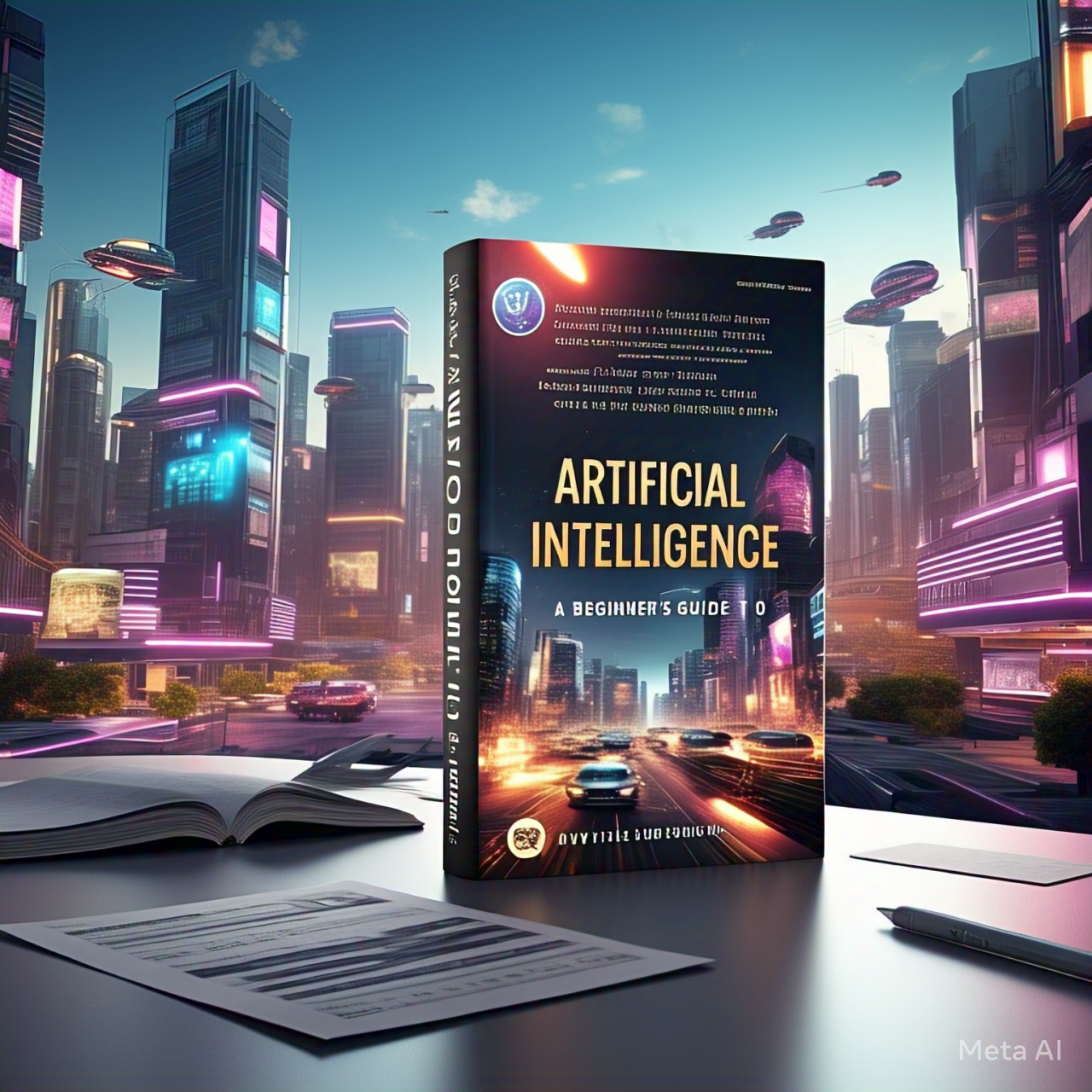Table of Contents
- Introduction to Artificial Intelligence
- History of AI
- Types of Artificial Intelligence
- How AI Works
- Applications of AI in Different Industries
- Benefits and Challenges of AI
- Future of AI
- FAQs
- Conclusion
1. Introduction to Artificial Intelligence
Artificial Intelligence (AI) is a branch of computer science that aims to create intelligent machines capable of mimicking human intelligence. From voice assistants like Siri and Alexa to self-driving cars, AI is revolutionizing the way we interact with technology.
Definition: According to John McCarthy, one of the pioneers of AI, “Artificial Intelligence is the science and engineering of making intelligent machines.”
AI encompasses various technologies, including machine learning, deep learning, natural language processing (NLP), and robotics.
2. History of AI
The concept of artificial intelligence dates back to ancient times, but modern AI emerged in the 20th century.
| Year | Milestone |
|---|---|
| 1950 | Alan Turing developed the “Turing Test” to determine machine intelligence. |
| 1956 | The term “Artificial Intelligence” was coined by John McCarthy at the Dartmouth Conference. |
| 1966 | ELIZA, the first chatbot, was developed. |
| 1997 | IBM’s Deep Blue defeated chess champion Garry Kasparov. |
| 2011 | IBM Watson won Jeopardy against human champions. |
| 2023 | OpenAI launched GPT-4, an advanced AI language model. |
3. Types of Artificial Intelligence
AI can be categorized into three main types:
- Narrow AI (Weak AI) – AI designed for specific tasks (e.g., Siri, Google Search, Netflix recommendations).
- General AI (Strong AI) – AI with human-like cognitive abilities (not yet developed).
- Super AI – Hypothetical AI surpassing human intelligence (a concept for the future).
4. How AI Works
AI works by processing data and making decisions using complex algorithms. The key components include:
- Machine Learning (ML): Training computers to learn from data.
- Deep Learning: Neural networks that simulate human brain functions.
- Natural Language Processing (NLP): AI understanding human language (e.g., chatbots, translation tools).
- Computer Vision: AI analyzing and recognizing images or videos.
Example: Self-driving cars use AI to process data from sensors and make driving decisions.
5. Applications of AI in Different Industries
AI is transforming multiple industries:
- Healthcare: AI-powered diagnostics, robotic surgeries, and drug discovery.
- Finance: Fraud detection, algorithmic trading, and automated customer support.
- Education: AI tutors, personalized learning, and grading automation.
- Retail: AI chatbots, recommendation systems, and inventory management.
- Manufacturing: AI-driven automation, predictive maintenance, and quality control.
6. Benefits and Challenges of AI
Benefits of AI:
- Increased Efficiency – AI automates repetitive tasks.
- Enhanced Accuracy – AI reduces human errors.
- Cost Savings – AI minimizes operational costs.
- Faster Decision-Making – AI processes data in real time.
- Innovation – AI enables advancements in medicine, technology, and space exploration.
Challenges of AI:
- Ethical Concerns – AI bias, job displacement, and data privacy issues.
- High Development Costs – AI requires extensive resources.
- Security Risks – AI can be misused for cyber threats.
- Lack of Transparency – AI decision-making is often a “black box.”
7. Future of AI
The future of AI is promising, with emerging technologies like Quantum AI, AI-driven robotics, and advanced natural language models leading the way. Experts predict that AI will continue to shape industries, enhance human capabilities, and solve complex problems.
However, ethical regulations and AI governance will be crucial in ensuring responsible AI development.
8. FAQs
Q1: What is the difference between AI and Machine Learning?
AI is a broad field that includes ML, while ML is a subset of AI where machines learn from data without explicit programming.
Q2: Is AI dangerous?
AI itself is not dangerous, but misuse (e.g., deepfakes, surveillance) can pose ethical and security risks.
Q3: Can AI replace human jobs?
AI automates certain tasks, but it also creates new job opportunities in AI-related fields.
Q4: How can I learn AI?
You can start by learning programming (Python), AI tools (TensorFlow, PyTorch), and online courses (Coursera, Udacity).
Q5: Will AI surpass human intelligence?
Currently, AI is not capable of human-level intelligence, but research in Artificial General Intelligence (AGI) continues.
9. Conclusion
Artificial Intelligence is a groundbreaking technology with immense potential. Understanding AI fundamentals helps individuals and businesses leverage its capabilities responsibly. As AI continues to evolve, ethical considerations and regulations will play a key role in shaping its future.
References:
- McCarthy, J. (1956). “Dartmouth Conference on AI.”
- Turing, A. (1950). “Computing Machinery and Intelligence.”
- Russell, S., & Norvig, P. (2020). “Artificial Intelligence: A Modern Approach.”
- OpenAI. (2023). “Advancements in AI Models.”





